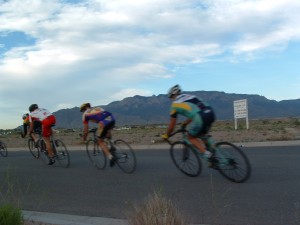
Jerry Brown: "Drought's over."
When the science team working on the National Integrated Drought Information System (NIDIS) invited me to give a media-communication perspective at a meeting back in the summer of 2006, I titled my talk “Maybe We Shouldn’t Call It `Drought'”.
The problem is that the word is used in so many different ways, meaning so many different things, that if not approached with care it can cause all kinds of trouble.
Kelly Redmond, from the Western Regional Climate Center (who, as it happens, was in the audience at my talk and made fun of my ill-fitting suit) wrote a great piece in the Bulletin of the American Meteorological Society back in 2002 taking on the problem of definition, and offering up a framework for thinking about the problem that has served me well:
Most concepts of drought involve a water balance. This implies that both supply and demand must be considered, as well as the question of whether there is “enough” (and, enough for what?). Thus, through time I have come to favor a simple definition; that is, insufficient water to meet needs.
There’s a second problem with the word “drought” that I think represents a more insidious problem: the fact that we don’t really have a word for the opposite of “drought.” Well, we do, I guess – “pluvial”? But when was the last time you saw that in a newspaper headline? The result is that when we’re on the dry side of the natural range of variability, we call it “drought” and go hunting for government bailouts. But when we’re on the wet side of the natural range of variability, we just treat it like it’s normal, getting all fat and happy.
Which brings me to today’s announcement by Jerry Brown that California’s drought is over. I love the language of the formal proclamation (all caps in original):
NOW, THEREFORE, I, EDMUND G. BROWN JR., Governor of the State of California, in accordance with the authority vested in me by the Constitution and the statutes of the State of California, do hereby PROCLAIM THE DROUGHT TO BE AT AN END.
I understand it’s very easy and a little cheap to make fun of a gubernatorial proclamation regarding such a natural phenomenon. I get that there are underlying legal and policy issues – that a formal legal declaration of “drought” triggers certain governmental actions, and that an anti-declaration is needed to unwind them.
But the turn-it-on, turn-it-off declaration issue really seems to me to highlight the underlying problem – it’s not that “droughts” are some unfathomable anomaly and now that it’s over we can all get back to normal. Consider this language in Brown’s statement:
“While this season’s storms have lifted us out of the drought, it’s critical that Californians continue to watch their water use,” Brown said. “Drought or no drought, demand for water in California always outstrips supply. Continued conservation is key.”
Whether we call it “drought” or not, the problem Redmond so gracefully highlighted – “insufficient water to meet needs” – has not gone away for Californians.
links:
- NIDIS
- Kelly Redmond, BAMS, on the definition of drought (pdf)
- the last time I wrote this blog post
- Jerry Brown’s announcement


